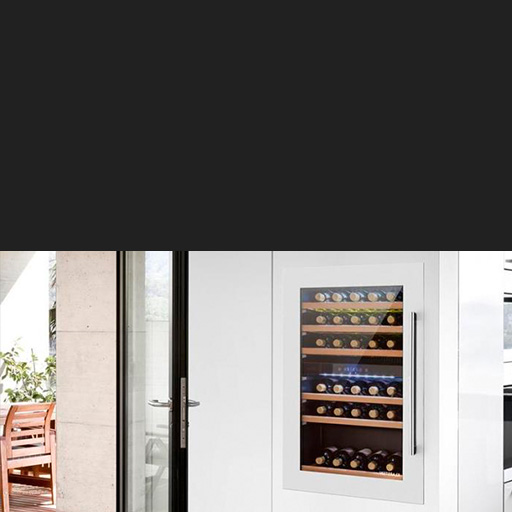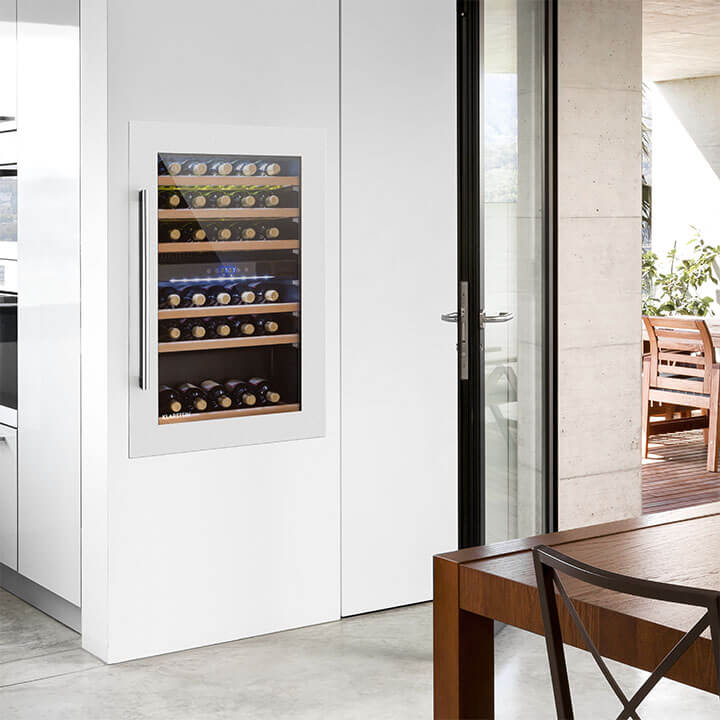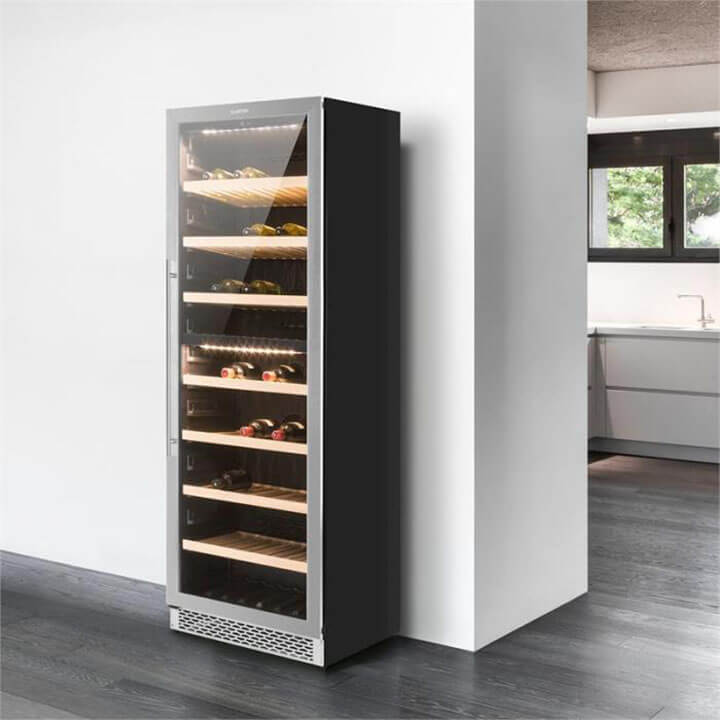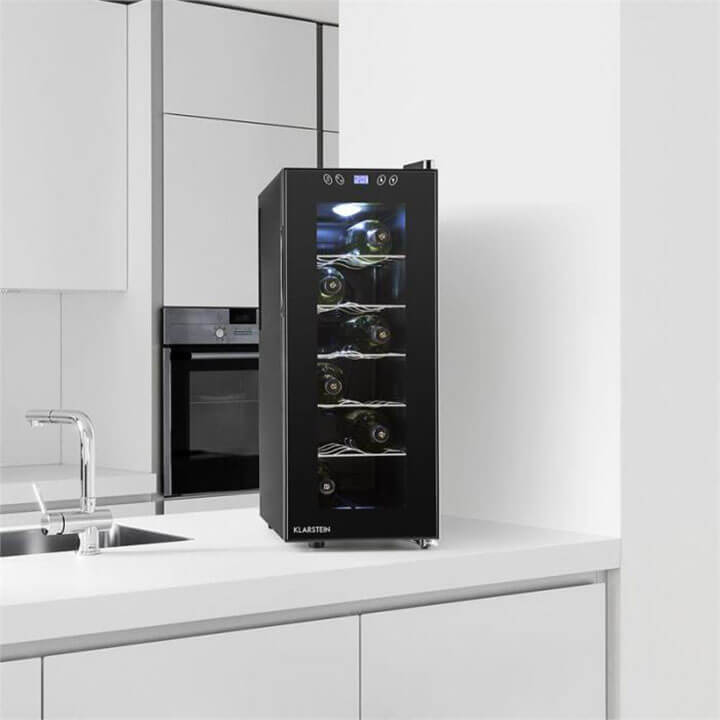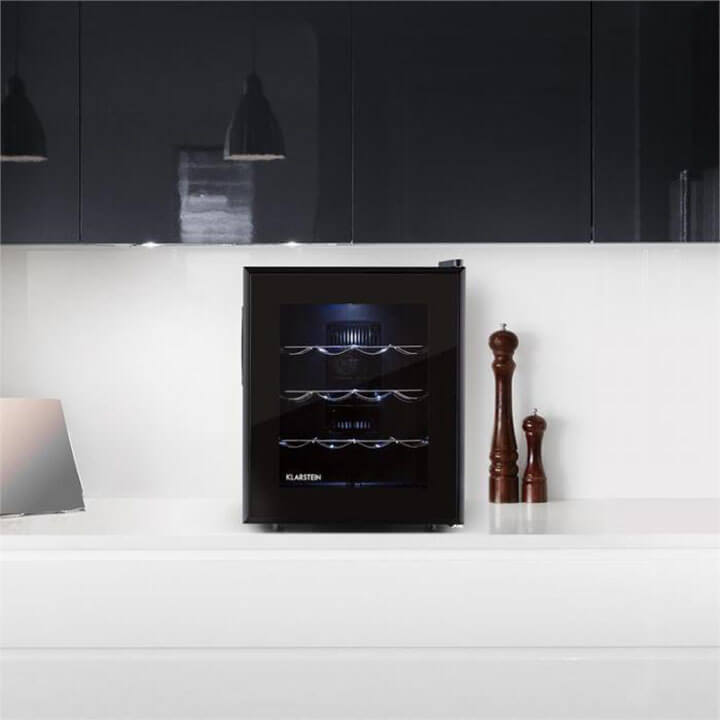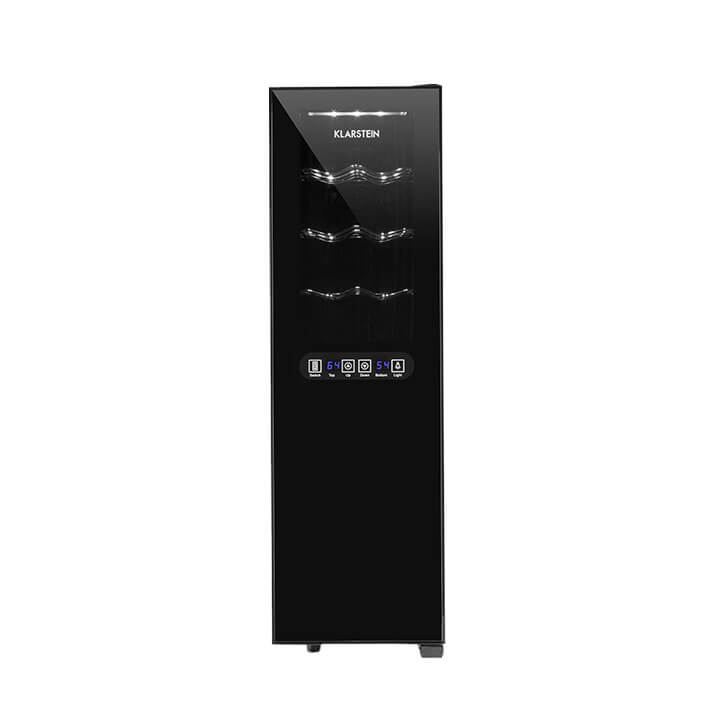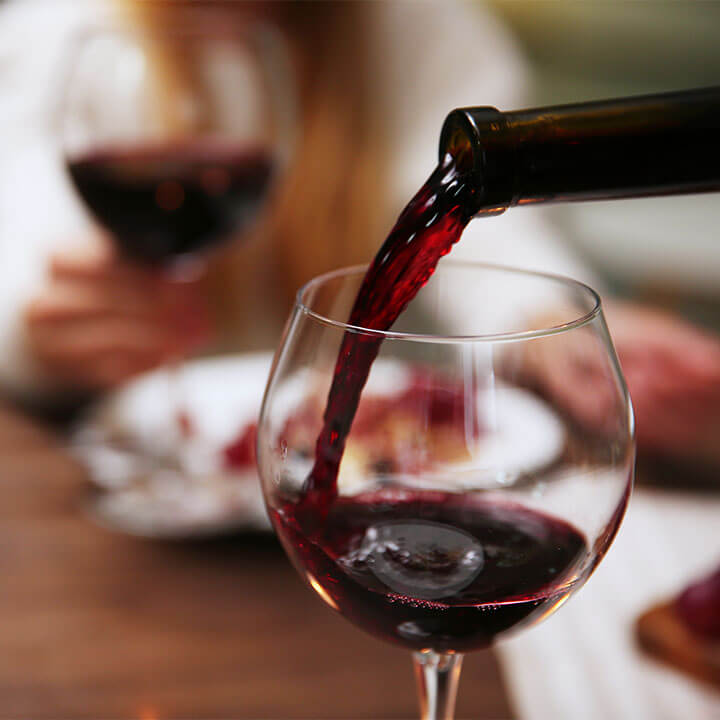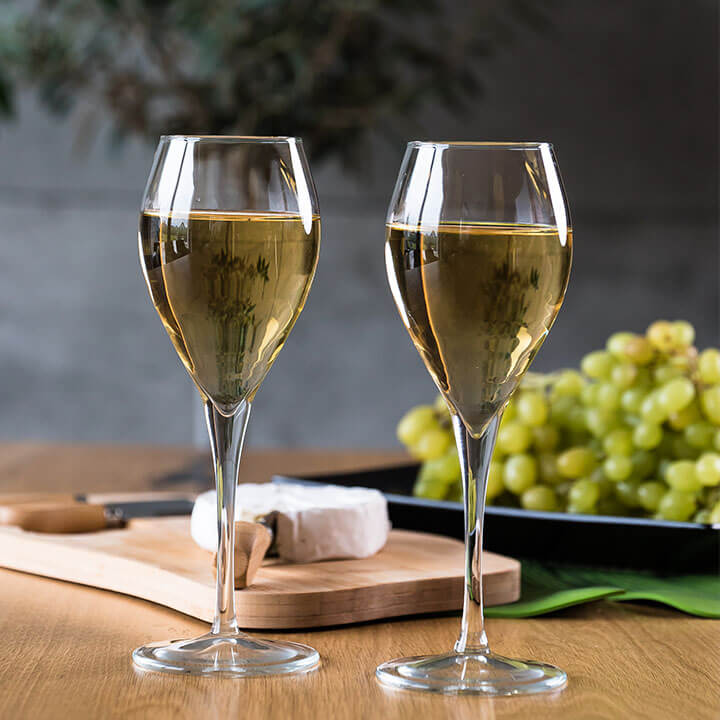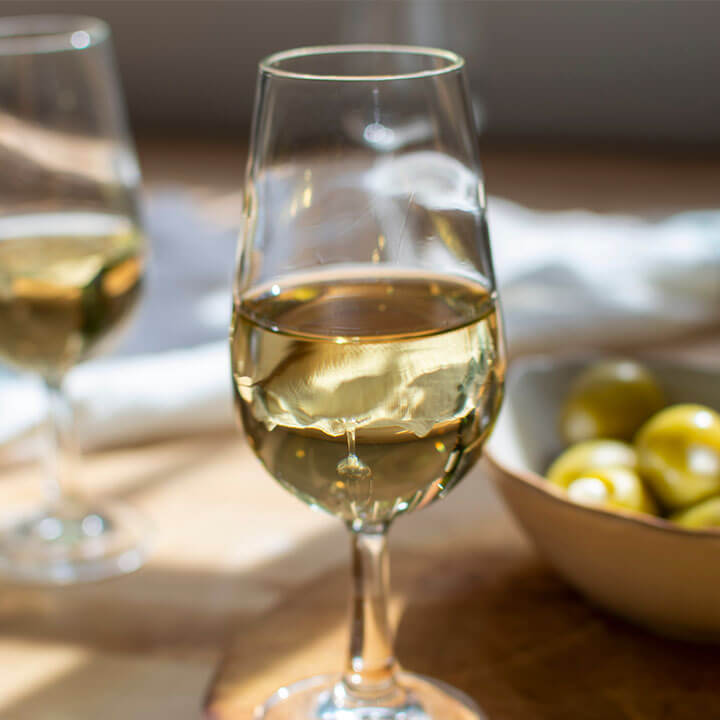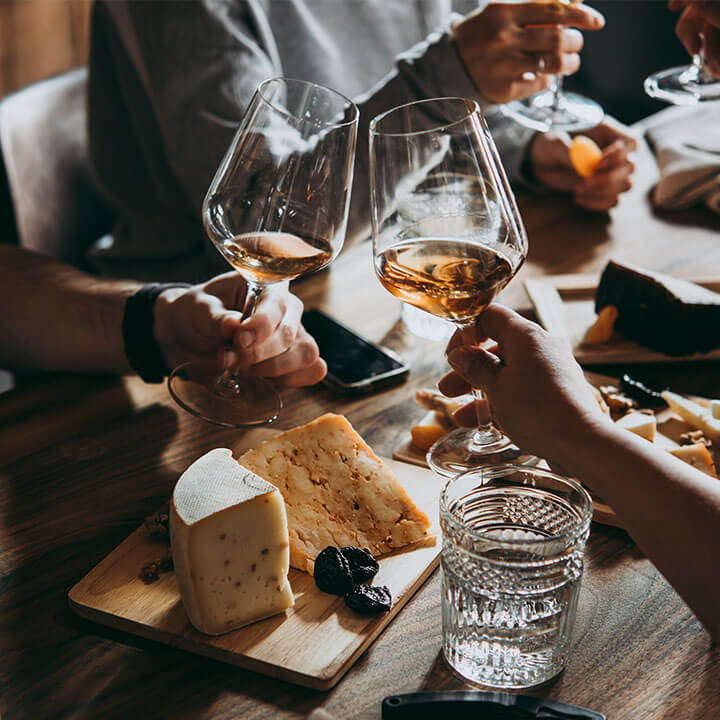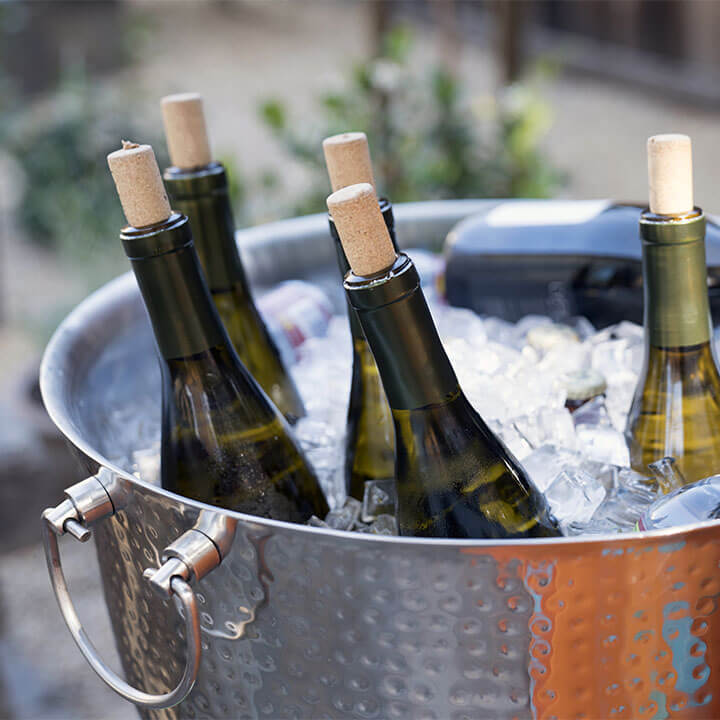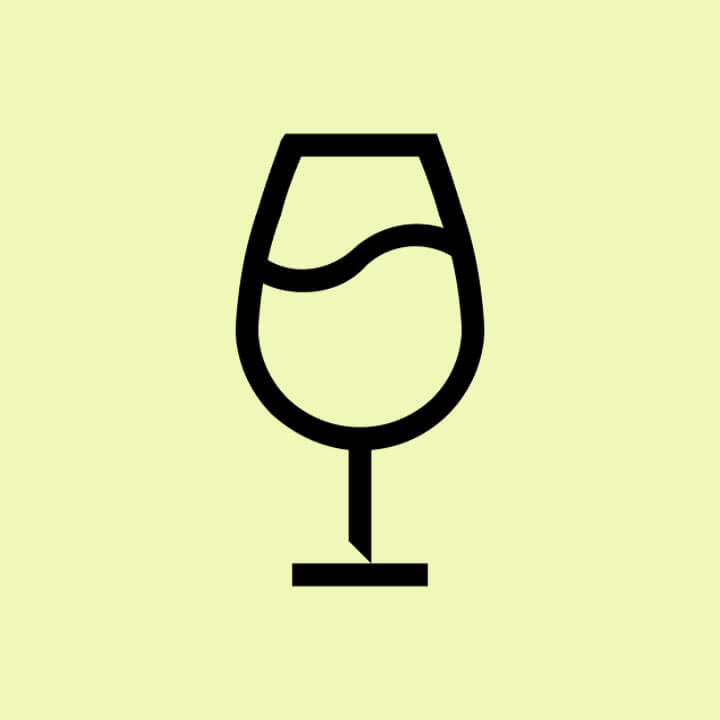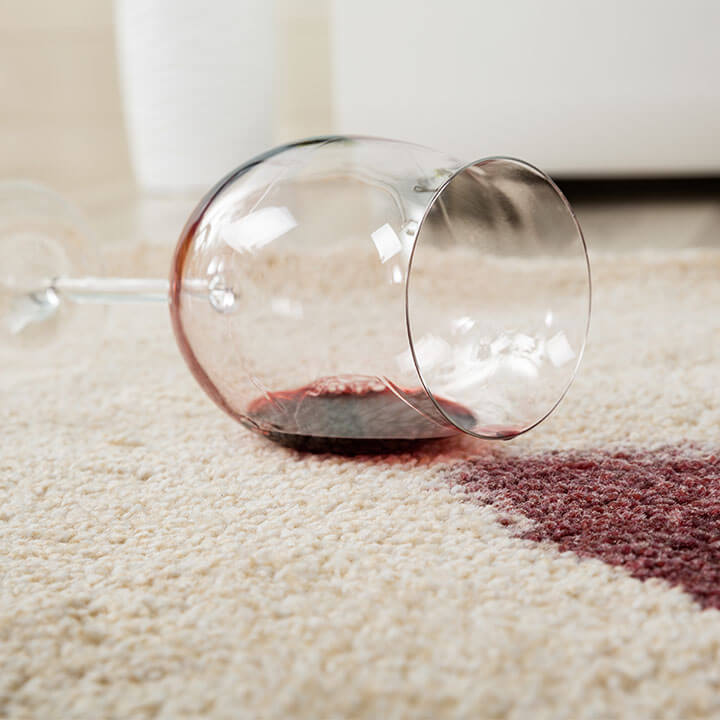Wine fridge: Room for fine wines
We pour you pure wine
Everyone has a wardrobe at home, but only a few own a wine cellar. We want to change that! Because wine is art - in one way or another. For some, a glass of wine is like an abstract painting that they can't make any sense of, but which exudes its charm. Others see wine culture as a gallery full of diverse paintings.
Either way, it is not only the type and origin of a wine that is important for good taste. Storage and temperature also need to be just right. We don't have to be professional sommeliers to recognise the advantages of high-quality wine refrigerators, which present themselves as the optimal solution for both professional and stylish storage of exquisite beverages.
"Wine is poetry in bottles" - Robert Louis Stevenson
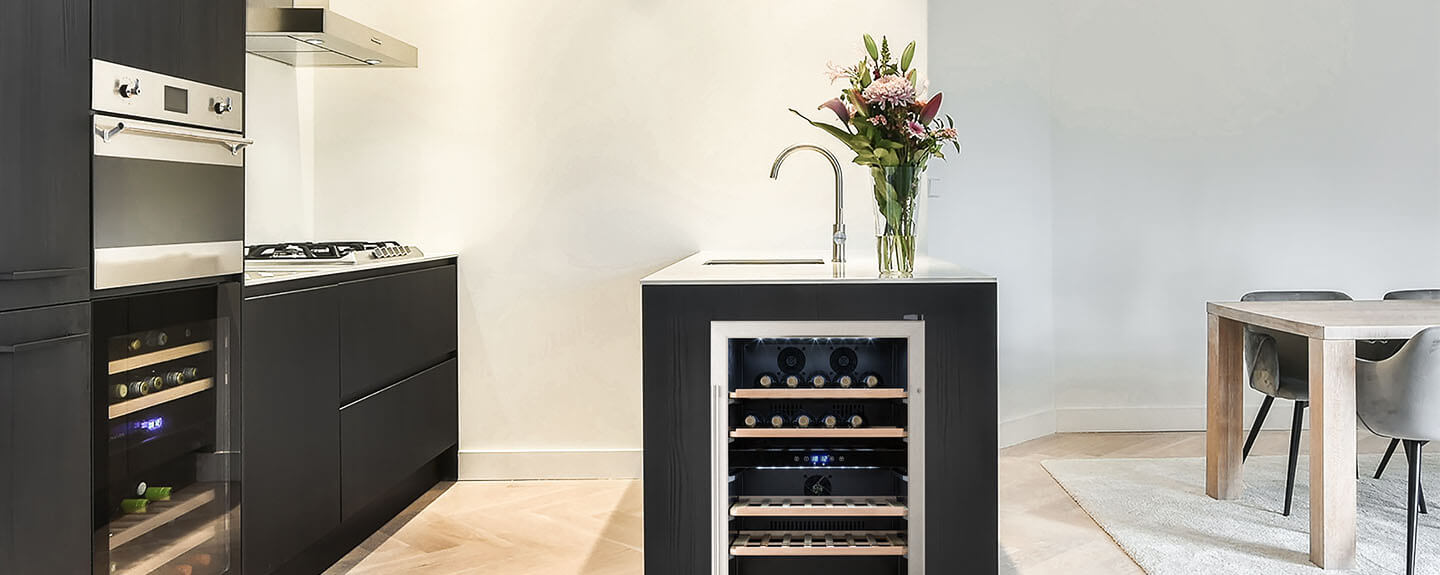
Is there such a thing as the perfect wine refrigerator?
We are convinced that the answer can only be "yes". But the right wine cabinet does not suddenly appear on your doorstep - the decision, like the subsequent contents, must mature in peace. A wine refrigerator can do more than just cooling. Depending on the size and price segment, it protects your favourite wines from impacts, light exposure or unsuitable humidity. You decide which functions are essential. Are you a wine drinker in the first category or a wine connoisseur in the second? Many things are possible: from a small wine refrigerator to a large wine fridge.
Bestsellers
How the wine fridge passes the test
Whether a wine can develop its full flavour depends on several factors. In our comprehensive overview for wine lovers, you will find helpful tips on different wine refrigerators and drinking temperatures, as well as basic information on storage and wine types. Naturally, we also go straight into practice and answer important everyday questions: Is the combination of red wine and fish a no-go and which glass is suitable for the choice of wine?
Klarstein's little wine guide
Red wine, white wine or rosé - most people can probably tell these varieties apart. But what is the difference between sparkling wine and semi-sparkling wine, and is prosecco actually sparkling wine? We bring light into the darkness.
Buying the perfect wine fridge
"Life is far too short to drink bad wine" - Johann Wolfgang von Goethe
Wines are demanding. They need a certain environment as well as temperature to develop their aromas and to convince with a distinct variety from the olfactory test to the finish. A professional wine climate control cabinet is capable of more than just cooling. Since a long-term and, above all, safe storage is an indisputable requirement for quality wines, real wine gourmets should not compromise when buying a wine cooler.
Design and type of construction
Should the wine cooler be black, white or silver? Do you prefer a small wine cabinet or a fridge-wine cabinet combination? While the first aspect is purely aesthetic, the second depends on the available space in your home. Before buying a wine cabinet, think carefully about how many bottles you want to store. Higher, faster, further does not apply when people are looking for the best wine fridges for themselves. But the more storage volume you need, the larger the wine fridge needs to be.
Tip
Interested consumers should also ask themselves whether they prefer a free-standing appliance such as the Klarstein Reserva or a built-in wine fridge. Another aspect to consider is the number of shelves: how many are needed, can they be removed for easy cleaning, and do the bottles lie on their side or stand upright? As the eye also enjoys a drink, let's finally take a look at the design. The fact that the wine refrigerator has a glass door is a logical choice for visual reasons. In addition, there are models with a focused presentation light or stylish interior lighting - for that extra eye-catcher.
Optimal humidity
There is no requirement for a wine cellar to store wine bottles under ideal conditions for a longer period of time. Wine refrigerators also guarantee a humidity of between 75 % and 85 %, which is important for post-ripening. This is particularly important for wine bottles with real corks, because the cork can shrink if the humidity is too low, allowing air to reach and spoil the wine. A good supply of fresh air, for example with an activated carbon filter, also optimises storage by filtering odours from the air and preserving the wine's flavour.
In peace and quiet lies the wine
Yes, later on, a gentle swirling of the wine glass is not only okay, but sometimes appropriate, because it allows the aromas to develop better - the wine opens up and we are able to experience it with our sense of smell before that first sip. But before that, any vibrations are unfavourable. Whoever buys a wine refrigerator should therefore pay attention to adjustable feet to guarantee a safe stand at all times and to avoid vibrations. After all, we are talking about a ripening process here. Let's give the wine its well-deserved resting time and it will thank us later with a legendary flavour when served in the glass. This also applies to the cooling element, which, together with the compressor unit, should run as quietly as possible. Last but not least, the location plays an important role: do not place the appliance directly next to the refrigerator or the dishwasher, for example. Often the products are so visually appealing that a wine refrigerator also cuts an excellent figure in the living room.
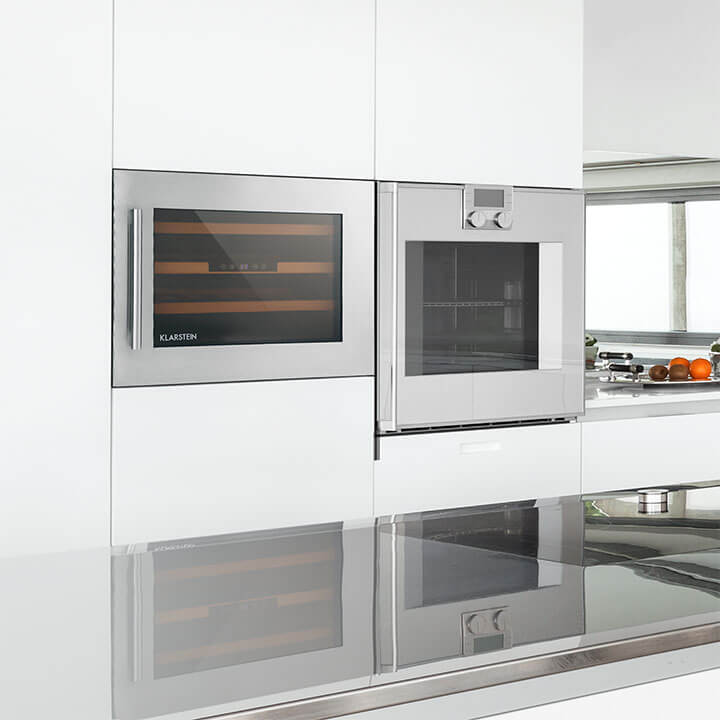
Light yes, but without UV
By now one thing is clear: wines are delicate. By now one thing is clear: wines are delicate. This also includes exposure to light. If a wine is permanently exposed to UV light, quality and aromas can suffer. Well-insulated glass doors with integrated UV protection provide adequate light protection. There is no need to worry about interior lighting, as LED light does not generate UV radiation.
My wine fridge is quiet
And yours should be too, if it's not in the cellar or garage. It's not only the wines that long for peace and quiet. Similar to a conventional refrigerator, the compressor responsible for cooling inevitably produces noise. If your wine refrigerator is not one of the most quiet models, it will quickly turn out to be a noise nuisance in the living room. Therefore, we also pay attention to the decibel rating, which should not exceed 40 (dB).
Protecting the environment
A wine refrigerator requires energy and therefore consumes electricity. There is no question that we want to be as efficient as possible in this area: primarily for the environment and secondarily for our own wallets. The classification of energy consumption is typically divided into ten levels, with an A+++ wine fridge having the highest efficiency - at the other end is the G rating. However, energy efficiency does not indicate the exact power consumption. For example, a larger cabinet may consume more electricity than a smaller wine cabinet with the same classification. If you want to calculate the annual consumption, you have to multiply the consumption in kilowatt hours (kWh) by the current electricity price of the supplier.
Take a closer look, but don't touch
If you want to protect your precious wine not only from vibrations and UV light, but also from curious fingers, a wine and beverage refrigerator with a child lock is a good idea. Let's face it: the best wine fridge is still the one that only you have access to. What's mine is yours? Lovely phrase, but it also has its limits. All kidding aside: the special function is primarily intended to prevent children from getting hold of the alcohol - for example, by using a digital combination lock. Tip: Do not use a family birth year as a code.
Klarstein's Wine Guide
"Champagne makes you feel that every day is a Sunday" - Marlene Dietrich
The guide reflects the essence of wine storage quite nicely: patience. But we slowly get closer to the essentials by opening the Klarstein wine cooler and taking a leisurely look at what's inside.
White wine
White wine is one of the world's most popular varieties and is therefore one of the most welcome guests in wine fridges. Winemakers use almost exclusively light-coloured grapes to produce white wine. They are usually drunk at a young age and the taste of a white wine is usually characterised by freshness, fruitiness as well as a higher acidity compared to red wine. Well-known grape varieties are Riesling, Sauvignon Blanc and Pinot Blanc.
Red wine
For red wines, as the name and colour already suggest, only red grapes are used. The wines get their colour from the skin of the fruit, which ferments together with the must. Colour intensity and tannin content - i.e. the tannins - depend on the duration of contact between the must and the peels. The time span can range from a few days (for light red wines) to up to two weeks (for heavy red wines). If the wines mature in wooden barrels, they develop particularly balsamic notes and taste more resinous. Prestigious grape varieties for red wines are Merlot, Cabernet Sauvignon, Tempranillo, Pinot noir and Sangiovese.
Rosé wine
The product of blending white and red wine is a rosé wine. A little joke, but behind it lies a common misconception: many people think that rosé wines are made by mixing white and red grapes. In fact, in the European Union it is even forbidden to mix red and white wine to make rosé. No, only the red grapes are part of the production process and winemakers achieve the pale red colour because they separate the skins from the must very early, so that they release only a small amount of pigment. There is one exception, however: rosé champagne is made from a mixture of light and dark grapes. The grape varieties Pinot Noir, Tempranillo, Pinotage, Shiraz and Cabernet Sauvignon are considered typical for rosé wines.
Pearl wine
How it tingles! A Pearl wine or semi-sparkling wine usually receives additional carbonic acid that has escaped during the fermentation process. In Italy, such wines are labelled "frizzante" and the French call them "perlant". However, sparkling wines are only slightly sparkling with a pressure of just one to 2.5 bar. Popular representatives, also in wine refrigerators, are many Proseccos from Italy.
Sparkling wine
So-called still wines have hardly any alcohol as well as carbonic acid and act as the basis for sparkling wines that ferment in the bottle and thus develop natural carbonic acid and their alcohol content. To withstand the pressure of at least three bar, the bottles must be particularly thick-walled - we know this from popping New Year's Eve corks. If you are not familiar with the term sparkling wine, we are nevertheless sure that you know the best-known one: Champagne, which can only bear the noble name if it was produced in the French Champagne region. German sparkling wine (Sekt) and sparkling wine are often equated by name, although genuine German sparkling wine is always produced using a German still wine as a base.
Fine and sweet
Noble sweet wines are made partly or entirely from grapes that are affected by noble rot and contain little moisture. Don't allow the word "rot" to put you off, because the final product is delicious in every way. Because the special grapes give off much less liquid than normal light or dark grapes, the production process requires a lot of them - this also increases the cost of the concentrated sweet wines, which include the Hungarian Tokay and the Château d'Yquem from France.
Liqueur wine
If a wine has more than 15 percent by volume, it usually belongs to the category of liqueur wines. Either the processing of overripe grapes or the use of a base wine enriched by, for example, brandy is responsible for the high alcohol content. This reduces fermentation and ensures a higher sugar content in the grapes. Banyuls, Marsala, Madeira, port and sherry are particularly recommended.
Beyond the wine fridge
Exquisite tips for wine lovers
After so much theory, it's time to pour yourself a glass of wine. At least in a moment, because for the ultimate wine enjoyment, we'll clear up another culinary misconception, inform you about drinking temperature as well as glass selection and tell you a trick in case a wine mishap occurs.
Clarification: Red wine and fish go well together
Many people follow the general rule that red wine is best with meat and white wine with fish. If the meat is grilled, roasted or braised, the roasted aromas truly harmonise well with the tannins of strong red wines. But the same is true for fish. If it's grilled, feel free to choose a lighter red wine from your wine fridge. Or you can fry the fish in a bacon coat and combine it with fried potatoes, beetroot or mushrooms - and bang, it's suitable for red wine. Great, now we've worked up an appetite.
Worth knowing: The perfect drinking temperature
We are taking a very liberal approach to the subject: There is no such thing as the best wine refrigerator or the only true drinking temperature. After all, what is the point of having a specific degree if the wine doesn't taste good that way? But beyond individual tastes, there are a few well-tempered guidelines that interested wine enthusiasts can follow in order to find the perfect drinking temperature for them. As a general rule, red wines should be drunk at around 18 degrees and white wines at around 10 degrees.
| Wine type |
Character |
Temperature |
| Sparkling wine |
|
6°C to 8° |
| White wine |
simple, lightstrong, full-bodied, complex |
9°C to 11°C12°C |
| Rotwein |
Sweet, dessert winelight, fruitymedium-bodied, everyday winestrong, full-bodied, complex |
12°C to 14°C14°C to 16°C16°C to 18°C18°C |
Drinking advice: Choosing the right wine glass
Red wine
With red wines, you can in fact look deeper into the glass, because they usually rest in bulbous glasses with a wide opening. This allows the wine to be swirled better to supply it with oxygen - especially lighter fruity wines such as a Dornfelder or Chianti can develop nicely this way. Wines rich in tannins such as Bordeaux, Barolo, Merlot or Cabernet Sauvignon need even more oxygen to develop their full aroma spectrum. In this case: a lot helps a lot. However, this does not refer to the content, but to the shape of the glass, which may be even more bulbous and larger for stronger red wines.
White wine and rosé
Do you have white and rosé wines in your wine fridge? Then you should also have more slender wine glasses at home. Instead of opening up the aromatic fans, the aromas concentrate in smaller glasses to better unfold in the mouth and nose. White and rosé wines need to breathe less in comparison to red wines, so decanting is often not necessary either. Slimmer wine glasses are ideal for Pinot Blanc, Pinot Gris, Riesling, Sauvignon Blanc or Silvaner.
Pearl wine
So-called flutes, which are much longer and narrower than red or white wine glasses, are recommended for pearl wines. Flutes are simply part of good taste for sparkling wines, because they look elegant and hold the carbonic acid better in the glass and the drink. We do not recommend "champagne goblets", however, because the acid escapes more quickly through the large opening and the sparkling wine will become stale.
Cleaning trick: Goodbye wine stains
If a filled wine glass tips over, one can only hope that it contained white wine. But you can also do something about red wine stains, because the salty remedy is not a myth. Especially for fabrics like upholstery that cannot be washed easily, a mixed home remedy can work wonders: Simply allow the salt to soak in, vacuum it off, apply shaving foam to the stain and remove it after a few hours with plenty of clean water. "Cleaning tip" number two: If the stain is still visible, put a fancy new cushion over it.
We wish you all the best in finding the right wine cabinet. Enjoy looking at the Klarstein wine fridges at your own pace and get in touch with us if you have any questions or suggestions.
"Good wine is a good, convivial thing, if you know how to handle it" - William Shakespeare




